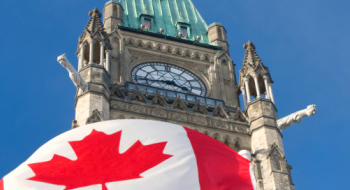
The federal government hiked the eligibility age for Old Age Security (OAS) to 67 from 65 reflecting the reality that Canadians are living longer and healthier lives, and may prefer to keep working.

The federal budget contains a number of measures relating to public pensions, public sector pensions and private retirement saving.

Canadians are staying in the workforce longer, but whether that’s a good or bad thing depends on whom you ask.
Don’t sacrifice pensions. That’s the message from Canadians according to a new Ipsos Reid poll done for Postmedia News and Global TV.
Ottawa should move to reform seniors' benefits by letting recipients choose richer payments, later, from the Old Age Security and Guaranteed Income Supplement programs if they wish, says a report by C.D. Howe Institute president and CEO William B.P. Robson.

Back in December, the federal government eliminated the last vestiges of mandatory retirement in Canada. It did this by repealing the sections of the Canadian Human Rights Act and the Canada Labour Code that allowed employers to force their employees to retire at a certain age—that age being 65, in most cases.

Prime Minister Stephen Harper put pensions on the front page with his announcement on Jan. 23, 2012, that the federal government is considering reducing the costs of the Guaranteed Income Supplement (GIS) and Old Age Security (OAS).

Yesterday afternoon, labour activists, seniors, and retirees descended on 21 Tory MP offices across Ontario to protest proposed cuts to Old Age Security benefits.

Human Resources and Skills Development Canada has announced the benefit rates for the Canada Pension Plan and Old Age Security, effective Jan. 1, 2012.

Baby boomers who fail to implement a long-term financial plan early in their retirement years are at risk of having their government benefits and credits clawed back, warns the BMO Retirement Institute. The institute’s report, Mind Your Taxes in Retirement, shows that many boomers aren’t savvy enough when it comes to understanding how they are […]